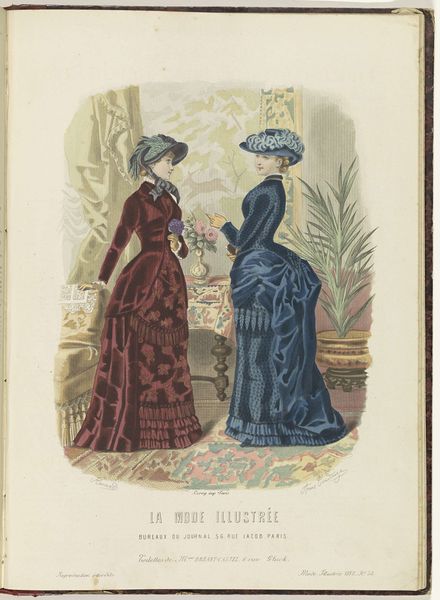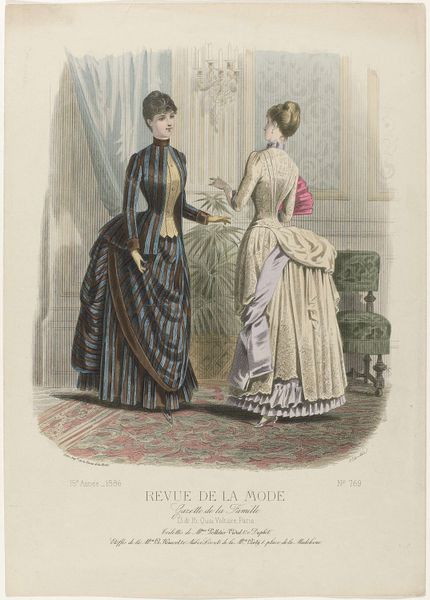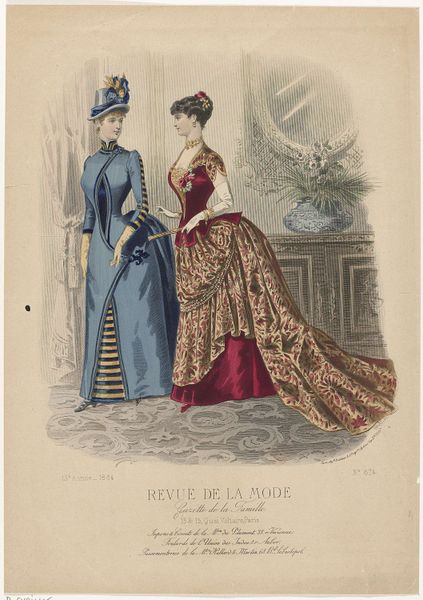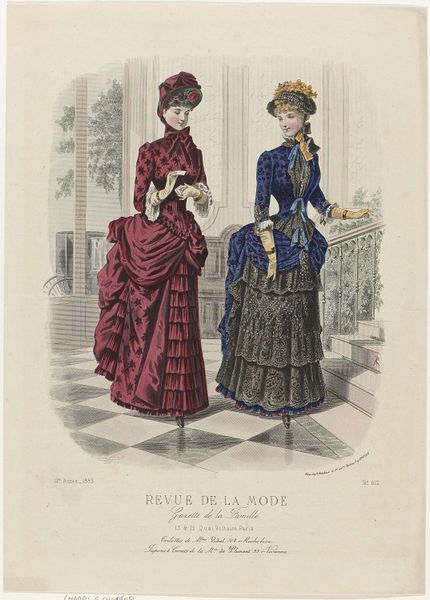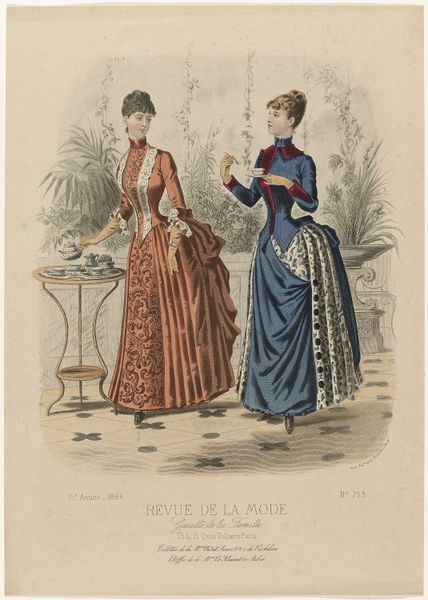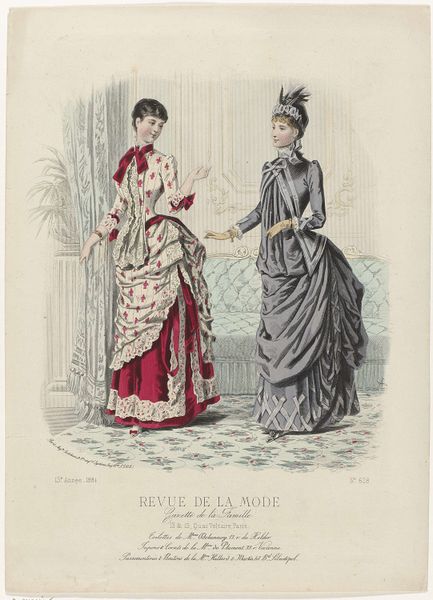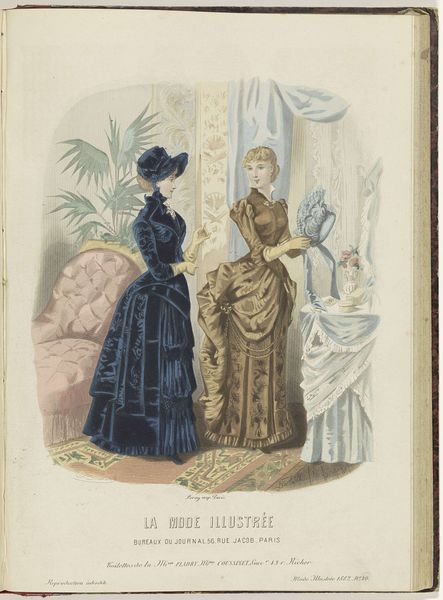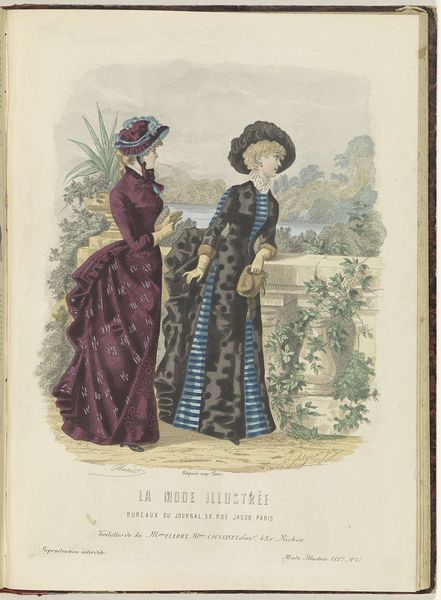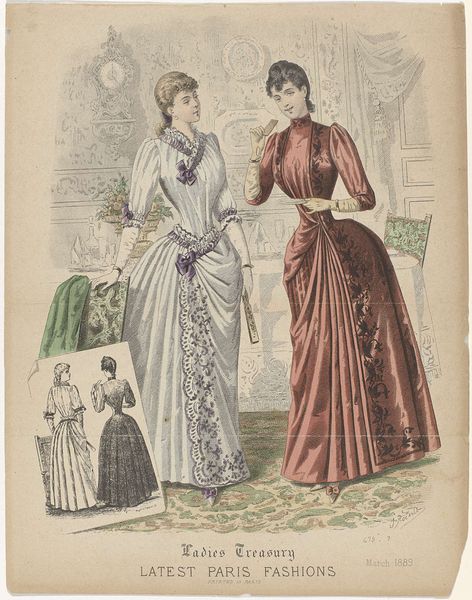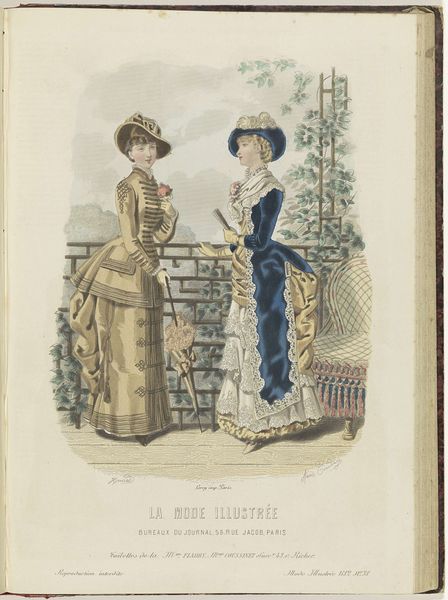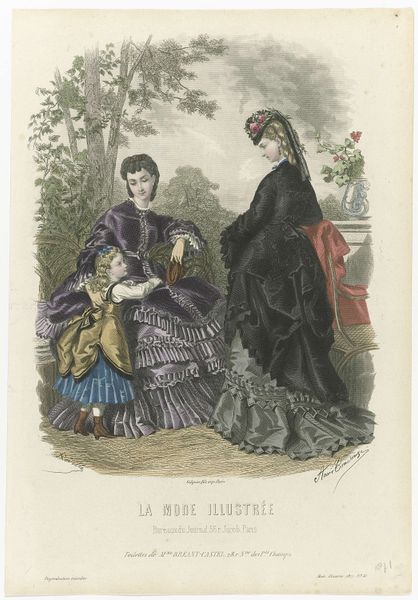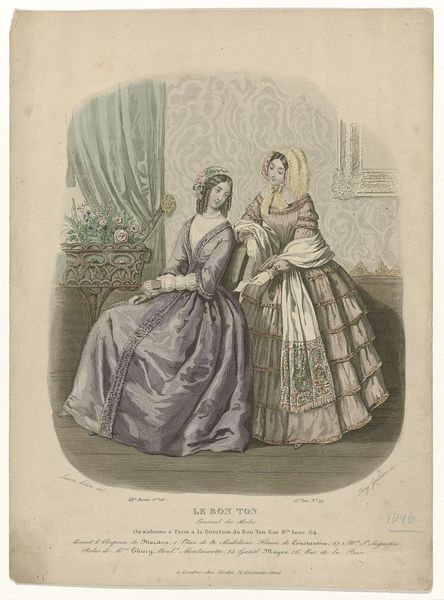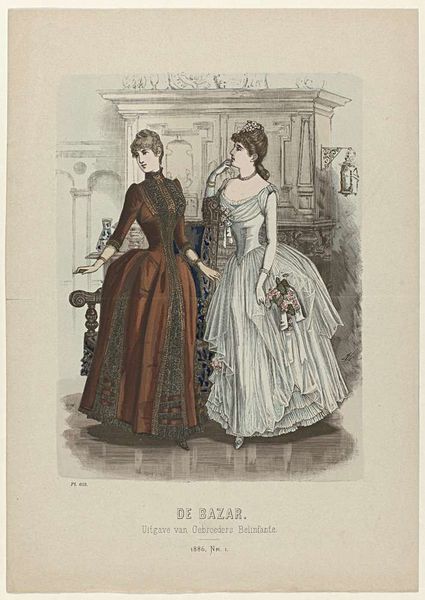
Revue de la Mode, Gazette de la Famille, dimanche 6 novembre 1887, 16e Année, No. 827: Etoffes de la M.on Le Houssel (...) 1887
0:00
0:00
Dimensions: height 375 mm, width 268 mm
Copyright: Rijks Museum: Open Domain
Curator: This print, titled "Revue de la Mode, Gazette de la Famille," comes to us from 1887 and depicts two women in the height of late Victorian fashion. A. Chaillot is credited as the artist. What strikes you first about this scene? Editor: I'm immediately struck by the contrast. One woman, confined in rigid vertical stripes, the other flowing outward in an almost shapeless mass of fabric. It's an interesting visual representation of the restrictive gender roles versus the aspiration for some sort of…liberation. Curator: Indeed. It's worth considering the context: fashion magazines like "Revue de la Mode" played a crucial role in disseminating ideals of femininity, class, and consumer culture during the late 19th century. These weren't just pretty pictures; they were shaping social expectations. Editor: Exactly. Looking closely, that level of detail wasn’t accidental! The puffed sleeves, the wasp waists, the yards and yards of fabric, these aren't simply beautiful clothes, they signal the time and money spent on appearing a certain way. This illustration functions as propaganda. Curator: You bring up an important point regarding access and class. While the magazine reached a broad readership, the fashions it portrayed were largely unattainable for working-class women. It solidified visual markers of status. The clothing also makes any form of labor impractical! Editor: Which speaks volumes, doesn't it? These images uphold a specific standard of beauty inextricably linked to leisure and wealth. Also, how complicit was the press in propagating ideals and beliefs that kept women tied up– quite literally in corsets– but also to ideas? Curator: Precisely. By examining this print through a social lens, we see it as more than just a pretty drawing. It is a piece of media tied to the politics of appearance, reinforcing norms and values tied to consumerism. Editor: Yes, now I feel the print carries an even greater impact; it speaks volumes about the limited choices available to women and prompts a powerful reflection on the progress we've made since then.
Comments
No comments
Be the first to comment and join the conversation on the ultimate creative platform.
